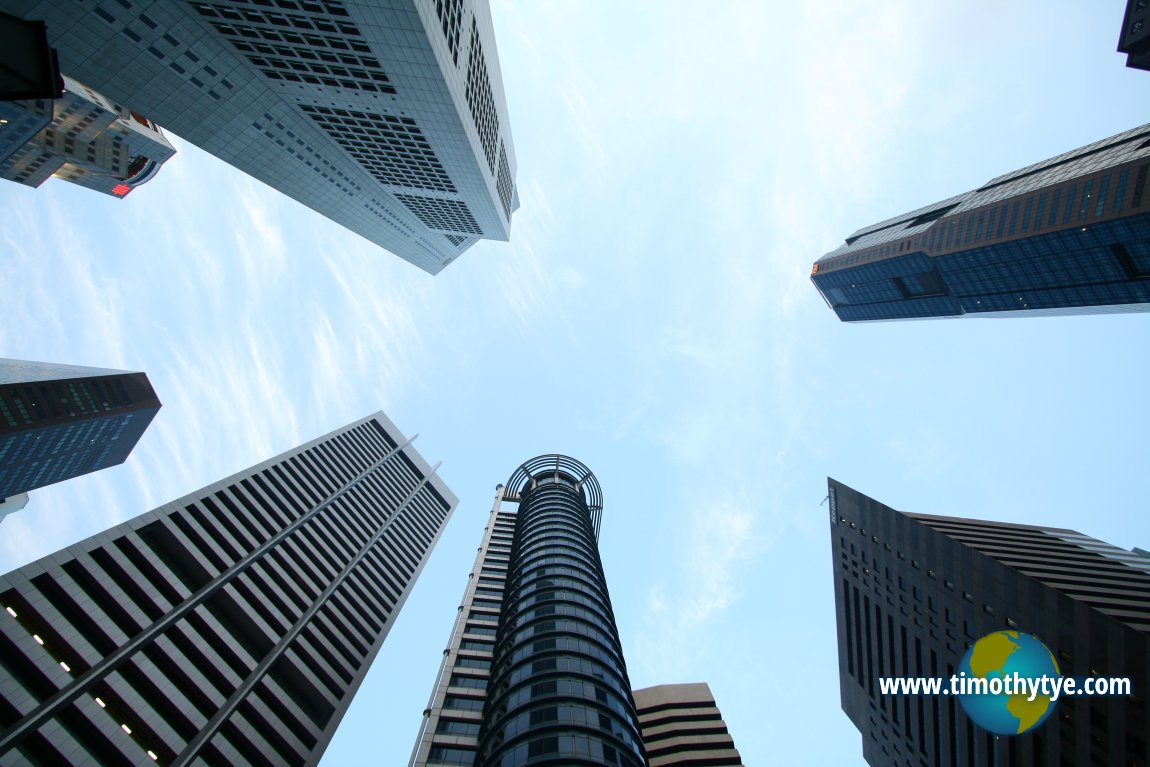 Singapore Central Business District (8 July, 2006)
Singapore Central Business District (8 July, 2006)
Singapore is one of the smallest countries in Asia. It presently has a size of 710.2 square kilometers, but is expected to add to that with continuous land reclamation. Despite its diminutive size, it is also one of the most developed and wealthiest country in the region. Singapore has a population density of 6,800 people for every square kilometer, making it one of the most densely populated places in the world.
As of 2009, the population of Singapore is estimated at 4,988,000 people. According to the International Monetary Fund, Singapore enjoys a per capita Gross Domestic Product of US$51,226, the fourth highest in the world behind Qatar, Luxembourg and Norway.
The name Singapore comes from Malay, Singapura, which in turn comes from Sanskrit, meaning "lion city". The name Singapore refers to both the city as well as the state. The country comprises mainland Singapore and over 60 small islands, many of which have been merged through reclamation. The largest islands off Singapore mainland are Jurong Island, Pulau Tekong, Pulau Ubin and Pulau Sentosa.
Singapore is a relatively flat country. The highest natural point is Bukit Timah, meaning "tin hill", which rises to only 166 meter. In comparison, the highest skyscrapers in Singapore are allowed a maximum height of 280 meters, of which three, namely OUB Centre, Republic Plaza and UOB Plaza attain that height.
Singapore's economy is geared towards being a service industry. It has moved away from manufacturing, as this is transferred to lower-cost countries such as China, Indonesia, Thailand and Malaysia. Singapore has long been regarded as having one of the most business-friendly economy in the world, and this attracts many multi-national companies to set up their regional headquarters here.
Singapore has a very well development transport infrastructure. A network of expressways enable motorists to travel from one end of Singapore to the other within one hour, often bypassing the city centre. Public transport in Singapore is also one of the most efficient in the region, supported by a bus and rail system. Since 2001, the EZ-Link stored-value smartcards allow commuters to efficiently use Singapore's buses and Mass Rapid Transit trains.
Singapore is heavily dependent on tourism as a source of income. Although it is not the most inexpensive destination in the region, the country bank on its key strengths such as a shopping and recreational hub. There are several large shopping malls in Singapore including VivoCity, Ngee Ann City, Suntec City Mall and ION Orchard.
Singapore is also constructing several huge recreational resorts, chiefly on the island of Sentosa. Among these, Resorts World Sentosa, which includes a Universal Studios theme park and the largest oceanarium in the world, is opening on 20 January, 2010. In addition to Resorts World, Singapore is also constructing the Marina Bay Sands, the centrepiece of which are three 55-storey towers linked at the top by a sky terrace. Both Resorts World and Marina Bay Sands were awarded licenses to operate casinos in Singapore.
On this page, I want to provide you a full view of all the sights worth visiting in Singapore at one glance. Listed on the column on the right are all the major (and some minor) sights in Singapore.
List of Sights in Singapore; back to Discover Singapore
 Latest updates on Penang Travel Tips
Latest updates on Penang Travel Tips

Copyright © 2003-2025 Timothy Tye. All Rights Reserved.

 Go Back
Go Back